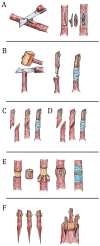Bridging the Gap: Genetic Insights into Graft Compatibility for Enhanced Kiwifruit Production
- PMID: 40243500
- PMCID: PMC11988582
- DOI: 10.3390/ijms26072925
Bridging the Gap: Genetic Insights into Graft Compatibility for Enhanced Kiwifruit Production
Abstract
Kiwifruit, with its unique flavor, nutritional value, and economic benefits, has gained significant attention in agriculture production. Kiwifruit plants have traditionally been propagated without grafting, but recently, grafting has become a more common practice. A new and complex disease called Kiwifruit Vine Decline Syndrome (KVDS) has emerged in different kiwifruit-growing areas. The syndrome was first recognized in Italy, although similar symptoms had been observed in New Zealand during the 1990s before subsequently spreading worldwide. While kiwifruit was not initially grafted in commercial orchards, the expansion of cultivation into regions with heavy soils or other challenging environmental conditions may make grafting selected kiwifruit cultivars onto KVDS-resistant or -tolerant rootstocks essential for the future of this crop. Grafting is a common horticultural practice, widely used to propagate several commercially important fruit crops, including kiwifruits, apples, grapes, citrus, peaches, apricots, and vegetables. Grafting methods and genetic compatibility have a crucial impact on fruit quality, yield, environmental adaptability, and disease resistance. Achieving successful compatibility involves a series of steps. During grafting, some scion/rootstock combinations exhibit poor graft compatibility, preventing the formation of a successful graft union. Identifying symptoms of graft incompatibility can be challenging, as they are not always evident in the first year after grafting. The causes of graft incompatibility are still largely unknown, especially in the case of kiwifruit. This review aims to examine the mechanisms of graft compatibility and incompatibility across different fruit crops. This review's goal is to identify potential markers and techniques that could enhance grafting success and boost the commercial production of kiwifruit.
Keywords: Actinidia; graft union formation; micrografting; primary and secondary metabolites; rootstock/scion.
Conflict of interest statement
The authors declare no conflicts of interest.
Figures





References
-
- Mudge K., Janick J., Scofield S., Goldschmidt E.E. Horticultural Reviews. Volume 35. John Wiley & Sons, Inc.; Hoboken, NJ, USA: 2009. A History of Grafting; pp. 437–493. - DOI
-
- Ferguson R.A., Huang H. Horticultural Reviews. Volume 33. John Wiley & Sons, Inc.; Hoboken, NJ, USA: 2007. Genetic Resources of Kiwifruit: Domestication and Breeding; pp. 1–121. - DOI
-
- De Mori G., De Rosa V., Cipriani G. Allele Mining for Genomic Designing of Fruit Crops. CRC Press; Boca Raton, FL, USA: 2024. Molecular Markers and Allele Mining in Kiwifruit Breeding; pp. 270–291.
-
- Li M.Z., Wang L.H., Zhuang Q.G., Xie Y. New Red- and Yellow-Fleshed Kiwifruit Cultivars. Acta Hortic. 2018;1218:135–138. doi: 10.17660/ActaHortic.2018.1218.17. - DOI
-
- Wang M., Li M., Meng A. Selection of a New Red-Fleshed Kiwifruit Cultivar “Hongyang”. Acta Hortic. 2003;610:115–117. doi: 10.17660/ActaHortic.2003.610.13. - DOI
Publication types
MeSH terms
Grants and funding
LinkOut - more resources
Full Text Sources
Miscellaneous

